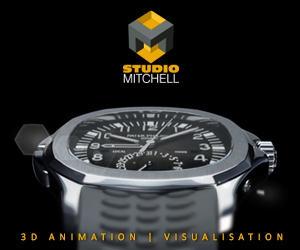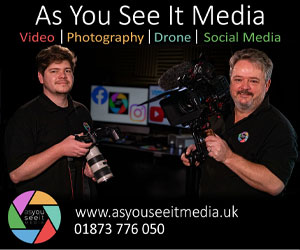Broadcast News
30/10/2012
Jigsaw24 - Working With The Blackmagic Design Cinema Camera: The Camera - Part 2
Jigsaw24 - Working With The Blackmagic Design Cinema Camera: The Camera - Part 2
By Liz Sunter
The Micro 4/3" Cinema Camera
At IBC, Blackmagic Design announced that they were also going to be releasing a Micro 4/3" version of the Cinema Camera. Given that the M3/4" fans in our office are fast becoming Cinema Camera fanboys, we wondered what the beta team thought of that model...
James: I think this is simply a very smart move by Blackmagic Design, as it opens up the choice of glass for the camera and makes it even more appealing to micro 4/3 users of cameras like the GH2 and AF100.
Den: We've been testing the image stabilisation on the Canon mount and I think for someone like James it makes perfect sense [to use the stabilised Canon lenses], because he does so much running around with bands and the like. I tend to do a bit more set piece stuff, so it matters less for me. But I think what the M3/4" version does is open it up to third party lens manufacturers. You can put any piece of glass on that camera, and I know people who are shooting dramas on the Alexa and using this as a B camera, so you want to be able to match the glass.
Are Blackmagic Design ready to become a camera company?
There's been a lot of discussion online - some of it informed, some of it comprised mostly of caps lock - about Blackmagic Design's post background, and whether or not they're capable of delivering a production-focused tool successfully. Apparently it's all about listening to the end user...
James: I'm so confident in BMD as a company I know they are listening to their customers and I'm certain this is only the first of many cameras we'll see them produce.
Den: I think BMD are a very flexible company. They think big, but they don't have any of the constraints of a corporation. While a lot of the key management have come from corporations, they're very anti-corporation in the way they approach things, they decide they want to do something and they do it. Beta testers have been sending back piles and piles of information on improvements and things we'd like to see, and they've been really responsive. So we feel very privileged to be in that position.
Also, all the beta testers are unique in their own fields, so you've got this group of people who are guiding the manufacturer in what needs to happen to the camera, and [BMD are] going "Yeah, okay let's do it," and then you get a new software upgrade. I think their only challenge now is the speed at which they're trying to pull things off. But it's very, very exciting, and getting to know the company a bit better I'm really excited by the energy and enthusiasm that the guys there have for these tools.
Jigsaw24: They've gone for High Dynamic Range as their killer feature over the more fashionable shallow DOF, though...
Beach RAW gradedDen: [With High Dynamic Range] you're just able to capture more information, with information you have more choice, with more choice you can embrace whatever creative slant you decide to take in post. And I think when you work with this camera - and I have to emphasise that you have to work with this camera in conjunction with grading software - it is about capturing a decent image on location and then bringing it into the grade enhancing that. So I think it's a more difficult camera to use, because you have to make sure you're doing that and getting it right, but it's a more powerful one.
James: I love a shallow DOF look for certain aspects of cinematic storytelling, however it is only one aspect and not the only visual tool filmmakers should use. Dynamic range is perhaps a far more important characteristic of film, as without this or with a limited amount of DR, then all footage just looks very video-y. I am and have always been obsessed with making digital formats look like film, as this was the format I was fortunate to first work with, albeit 16mm. Filmmaking is fundamentally an interplay of light and dark and the stories that are told within this medium, and so the dynamic range of a camera's sensor and how it is affected by lighting is enormously important, and crucial to creating a filmic look.
Den: Actually, what's especially good for me about the Cinema Camera is the highlight roll off. Film negative always rolled off the highlights in a very beautiful way. And this camera, I don't know how they've done it, but they just seem to have a lot of extra latitude at that end of the image so it never felt like it was too electronic. And so as a result even just out of the camera, even in ProRes, [your footage] is just very filmic.
Choosing your format
James: My biggest praise for the workflow with the BMCC is that you have choices: first, film in ProRes/DNxHD video mode for an instant great image as you're seeing it, straight off the back of the camera. Then film in ProRes/DNxHD film mode for a log image which still has an instant workflow to edit, but allows more control in the grade, and finally film in RAW DNG mode for the very best 12-bit uncompressed image quality with the most amount of flexibility of image in the grade, and also an increased 2.5K image resolution.
I have shot lots of footage in RAW and a fair amount in ProRes. There's no doubt that the ProRes workflow is the easiest way into the edit and has been ideal for a few fast turnaround jobs we've done, but I really get exciting about shooting RAW now that I've seen the image quality and control I have of that image within Resolve. I'm fortunate to often be grading my own material, so I'm always thinking with the grade in mind when I'm filming and really pay very close attention to exposure and getting the best image from the RAW files. The first few tests I shot were overexposed in many shots, but being able to pull the exposure back and see cloud detail and highlights become recoverable was a real eye opener compared to the limited latitude from DSLR recording formats.
Den: When you bring your files in you do have to render them out if you're working in RAW, so there is some extra time involved and I think it would depend on the project whether you went down the RAW route. But as an image-maker, I absolutely would always try and shoot RAW because I just like having that extra latitude; it's like, I've got all this power and I want to use it. But as I say, it's easy to nip down to ProRes and you're not losing a huge amount, so I think there's a great compromise in that.
To find out what Den and James think about the Cinema Camera workflow and its partnership with Resolve, head over to part two, or click on the link below to see more stills from Den's Cinema Camera shoot (you can also see the final video here).
www.jigsawbroadcast.com
By Liz Sunter
The Micro 4/3" Cinema Camera
At IBC, Blackmagic Design announced that they were also going to be releasing a Micro 4/3" version of the Cinema Camera. Given that the M3/4" fans in our office are fast becoming Cinema Camera fanboys, we wondered what the beta team thought of that model...
James: I think this is simply a very smart move by Blackmagic Design, as it opens up the choice of glass for the camera and makes it even more appealing to micro 4/3 users of cameras like the GH2 and AF100.
Den: We've been testing the image stabilisation on the Canon mount and I think for someone like James it makes perfect sense [to use the stabilised Canon lenses], because he does so much running around with bands and the like. I tend to do a bit more set piece stuff, so it matters less for me. But I think what the M3/4" version does is open it up to third party lens manufacturers. You can put any piece of glass on that camera, and I know people who are shooting dramas on the Alexa and using this as a B camera, so you want to be able to match the glass.
Are Blackmagic Design ready to become a camera company?
There's been a lot of discussion online - some of it informed, some of it comprised mostly of caps lock - about Blackmagic Design's post background, and whether or not they're capable of delivering a production-focused tool successfully. Apparently it's all about listening to the end user...
James: I'm so confident in BMD as a company I know they are listening to their customers and I'm certain this is only the first of many cameras we'll see them produce.
Den: I think BMD are a very flexible company. They think big, but they don't have any of the constraints of a corporation. While a lot of the key management have come from corporations, they're very anti-corporation in the way they approach things, they decide they want to do something and they do it. Beta testers have been sending back piles and piles of information on improvements and things we'd like to see, and they've been really responsive. So we feel very privileged to be in that position.
Also, all the beta testers are unique in their own fields, so you've got this group of people who are guiding the manufacturer in what needs to happen to the camera, and [BMD are] going "Yeah, okay let's do it," and then you get a new software upgrade. I think their only challenge now is the speed at which they're trying to pull things off. But it's very, very exciting, and getting to know the company a bit better I'm really excited by the energy and enthusiasm that the guys there have for these tools.
Jigsaw24: They've gone for High Dynamic Range as their killer feature over the more fashionable shallow DOF, though...
Beach RAW gradedDen: [With High Dynamic Range] you're just able to capture more information, with information you have more choice, with more choice you can embrace whatever creative slant you decide to take in post. And I think when you work with this camera - and I have to emphasise that you have to work with this camera in conjunction with grading software - it is about capturing a decent image on location and then bringing it into the grade enhancing that. So I think it's a more difficult camera to use, because you have to make sure you're doing that and getting it right, but it's a more powerful one.
James: I love a shallow DOF look for certain aspects of cinematic storytelling, however it is only one aspect and not the only visual tool filmmakers should use. Dynamic range is perhaps a far more important characteristic of film, as without this or with a limited amount of DR, then all footage just looks very video-y. I am and have always been obsessed with making digital formats look like film, as this was the format I was fortunate to first work with, albeit 16mm. Filmmaking is fundamentally an interplay of light and dark and the stories that are told within this medium, and so the dynamic range of a camera's sensor and how it is affected by lighting is enormously important, and crucial to creating a filmic look.
Den: Actually, what's especially good for me about the Cinema Camera is the highlight roll off. Film negative always rolled off the highlights in a very beautiful way. And this camera, I don't know how they've done it, but they just seem to have a lot of extra latitude at that end of the image so it never felt like it was too electronic. And so as a result even just out of the camera, even in ProRes, [your footage] is just very filmic.
Choosing your format
James: My biggest praise for the workflow with the BMCC is that you have choices: first, film in ProRes/DNxHD video mode for an instant great image as you're seeing it, straight off the back of the camera. Then film in ProRes/DNxHD film mode for a log image which still has an instant workflow to edit, but allows more control in the grade, and finally film in RAW DNG mode for the very best 12-bit uncompressed image quality with the most amount of flexibility of image in the grade, and also an increased 2.5K image resolution.
I have shot lots of footage in RAW and a fair amount in ProRes. There's no doubt that the ProRes workflow is the easiest way into the edit and has been ideal for a few fast turnaround jobs we've done, but I really get exciting about shooting RAW now that I've seen the image quality and control I have of that image within Resolve. I'm fortunate to often be grading my own material, so I'm always thinking with the grade in mind when I'm filming and really pay very close attention to exposure and getting the best image from the RAW files. The first few tests I shot were overexposed in many shots, but being able to pull the exposure back and see cloud detail and highlights become recoverable was a real eye opener compared to the limited latitude from DSLR recording formats.
Den: When you bring your files in you do have to render them out if you're working in RAW, so there is some extra time involved and I think it would depend on the project whether you went down the RAW route. But as an image-maker, I absolutely would always try and shoot RAW because I just like having that extra latitude; it's like, I've got all this power and I want to use it. But as I say, it's easy to nip down to ProRes and you're not losing a huge amount, so I think there's a great compromise in that.
To find out what Den and James think about the Cinema Camera workflow and its partnership with Resolve, head over to part two, or click on the link below to see more stills from Den's Cinema Camera shoot (you can also see the final video here).
www.jigsawbroadcast.com
Top Related Stories
Click here for the latest broadcast news stories.
28/02/2024
Jonathan Wales Immerses Horror Film Audiences
When it comes to horror films, production teams work hard to find new approaches to scare audiences. Today, with Dolby Atmos and immersive sound growi
Jonathan Wales Immerses Horror Film Audiences
When it comes to horror films, production teams work hard to find new approaches to scare audiences. Today, with Dolby Atmos and immersive sound growi
19/02/2024
Cinelab Film & Digital Appoints Steve Milne As Vice-Chairman
Cinelab Film & Digital has announced the appointment of Steve Milne as Vice-Chairman. An industry heavy weight with an illustrious career spanning ove
Cinelab Film & Digital Appoints Steve Milne As Vice-Chairman
Cinelab Film & Digital has announced the appointment of Steve Milne as Vice-Chairman. An industry heavy weight with an illustrious career spanning ove
12/02/2024
Catalyst International Film Festival Announces Short Documentary Award
Catalyst International Film Festival is delighted to announce the Short Documentary Award, 2024. The award is open to emerging filmmakers. The success
Catalyst International Film Festival Announces Short Documentary Award
Catalyst International Film Festival is delighted to announce the Short Documentary Award, 2024. The award is open to emerging filmmakers. The success
07/02/2024
RENDR Festival Returns With Epic Line-Up Of Film And TV Talent
Following the success of its debut last year, Belfast's RENDR festival returns to the city next month with an extraordinary line-up of creative talent
RENDR Festival Returns With Epic Line-Up Of Film And TV Talent
Following the success of its debut last year, Belfast's RENDR festival returns to the city next month with an extraordinary line-up of creative talent
02/06/2023
Wooden Camera Launches New Elite Accessory Camera System
Wooden Camera has announced the new Elite Accessory System for ARRI ALEXA 35: a series of camera cage components designed to provide a flexible, full-
Wooden Camera Launches New Elite Accessory Camera System
Wooden Camera has announced the new Elite Accessory System for ARRI ALEXA 35: a series of camera cage components designed to provide a flexible, full-
30/10/2012
Jigsaw24 - Working With The Blackmagic Design Cinema Camera: The Camera
Jigsaw24 - Working With The Blackmagic Design Cinema Camera: The Camera - Part 1 By Liz Sunter While we've not been shy about getting grabby with the
Jigsaw24 - Working With The Blackmagic Design Cinema Camera: The Camera
Jigsaw24 - Working With The Blackmagic Design Cinema Camera: The Camera - Part 1 By Liz Sunter While we've not been shy about getting grabby with the
25/04/2024
Molinare Creative Group Opens Facility In Liverpool
Molinare Creative Group has announced that its DIT and LAB division, Notorious DIT, is expanding the Group's operations to the Northwest of England, o
Molinare Creative Group Opens Facility In Liverpool
Molinare Creative Group has announced that its DIT and LAB division, Notorious DIT, is expanding the Group's operations to the Northwest of England, o
13/03/2012
Vitec GTC Awards 2012 Nominees Announced
The Guild of Television Cameramen (GTC) has announced the shortlist for the Vitec GTC Awards 2012. The awards will be presented at the IET Austin Cour
Vitec GTC Awards 2012 Nominees Announced
The Guild of Television Cameramen (GTC) has announced the shortlist for the Vitec GTC Awards 2012. The awards will be presented at the IET Austin Cour
02/07/2014
Derek Yee Selects Blackmagic 4K Cam
Award winning director Derek Yee has purchased the Blackmagic Production Camera 4K for his production team and to provide footage for his new film 'I
Derek Yee Selects Blackmagic 4K Cam
Award winning director Derek Yee has purchased the Blackmagic Production Camera 4K for his production team and to provide footage for his new film 'I
02/04/2014
Bradley Engineering To Showcase Developments At NAB
British manufacturer Bradley Engineering will be showing a set of newly-developed camera heads and accessories for unobtrusive and remote controlled f
Bradley Engineering To Showcase Developments At NAB
British manufacturer Bradley Engineering will be showing a set of newly-developed camera heads and accessories for unobtrusive and remote controlled f
10/05/2013
Gearhouse Broadcast & Hitachi Hit The Road
"Ever since we announced our partnership with Hitachi interest in these superb HDTV cameras has been exceptionally high. Now, through our national roa
Gearhouse Broadcast & Hitachi Hit The Road
"Ever since we announced our partnership with Hitachi interest in these superb HDTV cameras has been exceptionally high. Now, through our national roa
27/10/2008
Vaddio Adds Panasonic Robotic Cameras In Strategic OEM Distribution Agreement
Vaddio, a leading designer and OEM distributor of speciality PTZ cameras and high-end camera control system used in the broadcasting, audio/visual and
Vaddio Adds Panasonic Robotic Cameras In Strategic OEM Distribution Agreement
Vaddio, a leading designer and OEM distributor of speciality PTZ cameras and high-end camera control system used in the broadcasting, audio/visual and
19/04/2018
Ikegami To Show New Camera Additions At The Media Production Show
Ikegami Electronics (Europe) is to showcase two new additions to its camera range at the the Media Production Show in London, June 12-13. The Ikegami
Ikegami To Show New Camera Additions At The Media Production Show
Ikegami Electronics (Europe) is to showcase two new additions to its camera range at the the Media Production Show in London, June 12-13. The Ikegami
03/09/2012
Hitachi Showcases SK-HD1500 High-Speed Broadcast System Camera
Hitachi is set to introduces the New SK-HD1500 High-Speed Broadcast System Camera in Europe. On its stand at IBC (11.E30), Hitachi Kokusai Electric Eu
Hitachi Showcases SK-HD1500 High-Speed Broadcast System Camera
Hitachi is set to introduces the New SK-HD1500 High-Speed Broadcast System Camera in Europe. On its stand at IBC (11.E30), Hitachi Kokusai Electric Eu
27/03/2014
Codex Launches Action CAM
Codex has announced Codex Action CAM, an ultra-compact, all-in-one, digital cinema camera and recording package for 2D and S3D production. The camera
Codex Launches Action CAM
Codex has announced Codex Action CAM, an ultra-compact, all-in-one, digital cinema camera and recording package for 2D and S3D production. The camera















